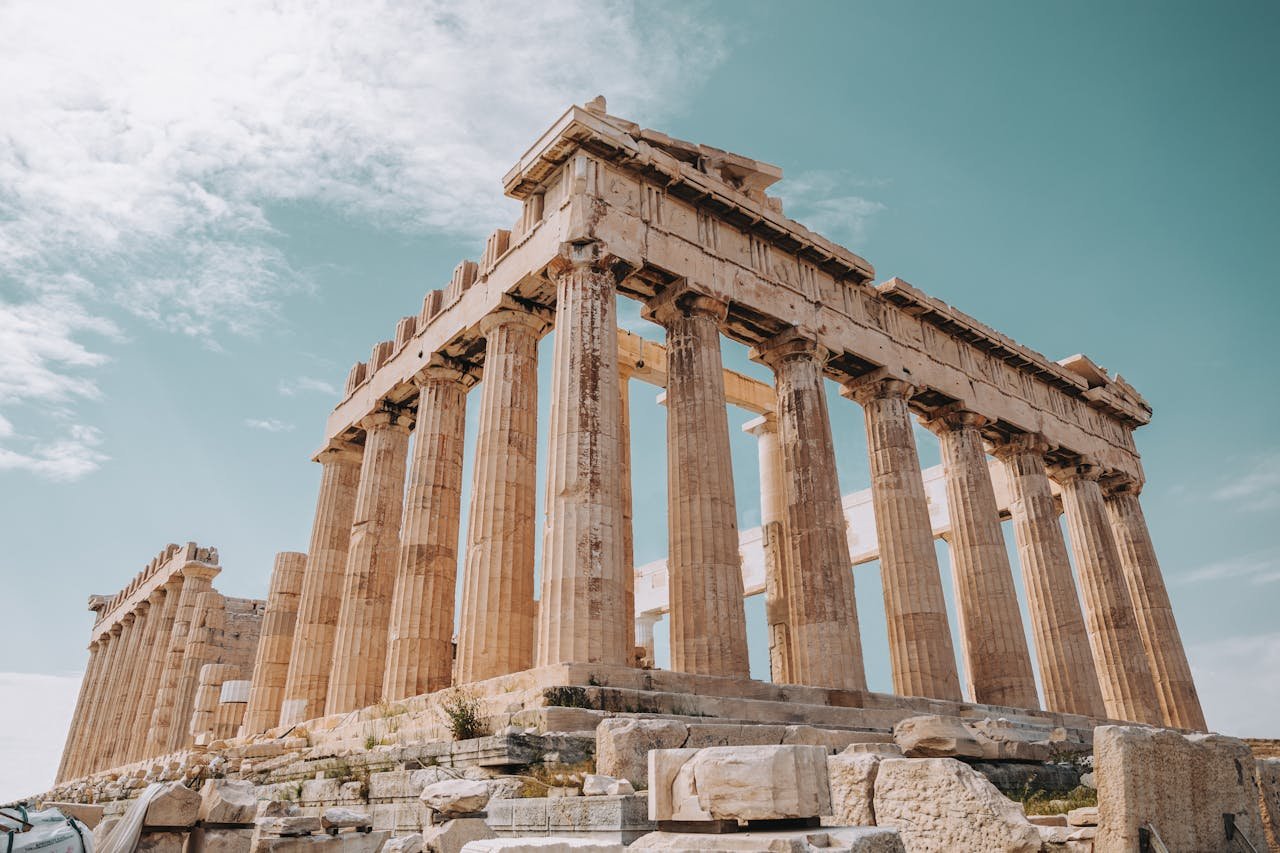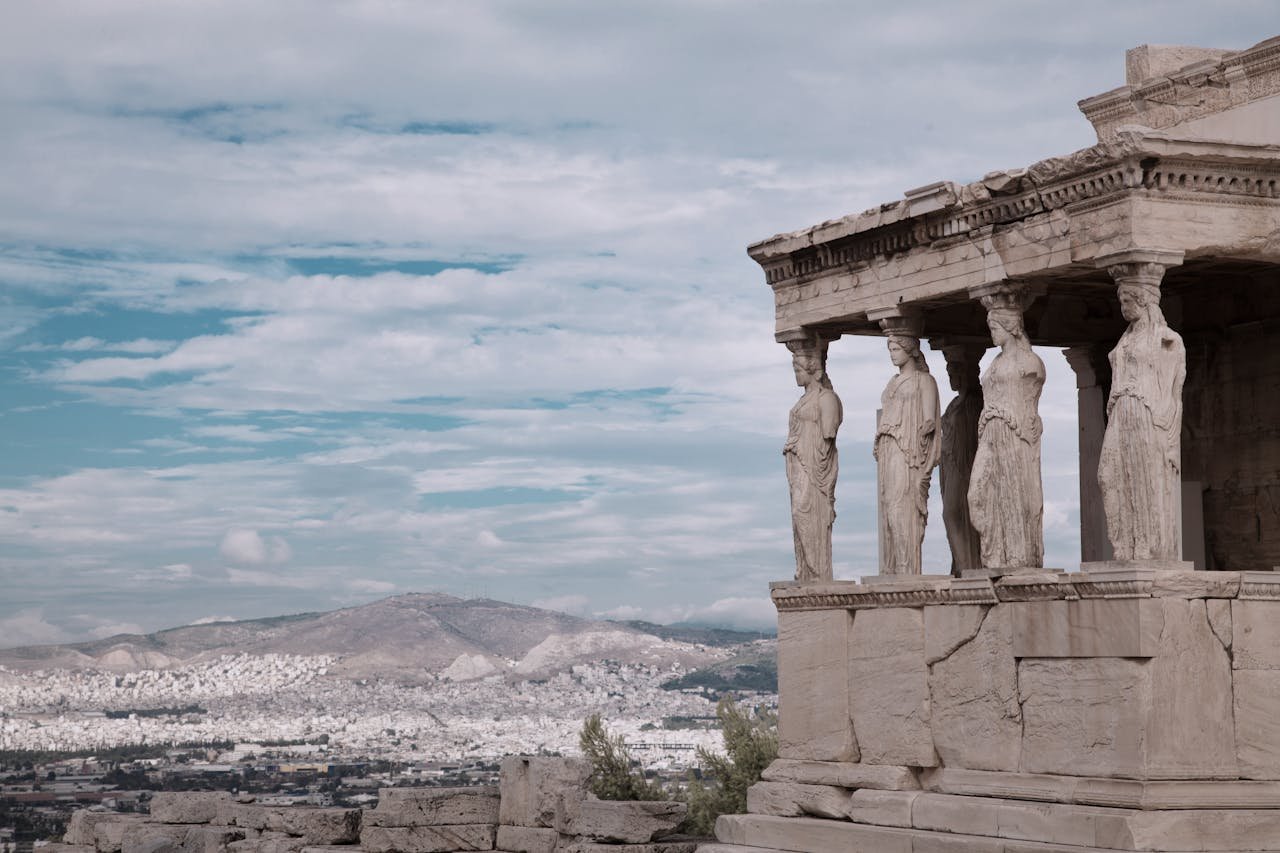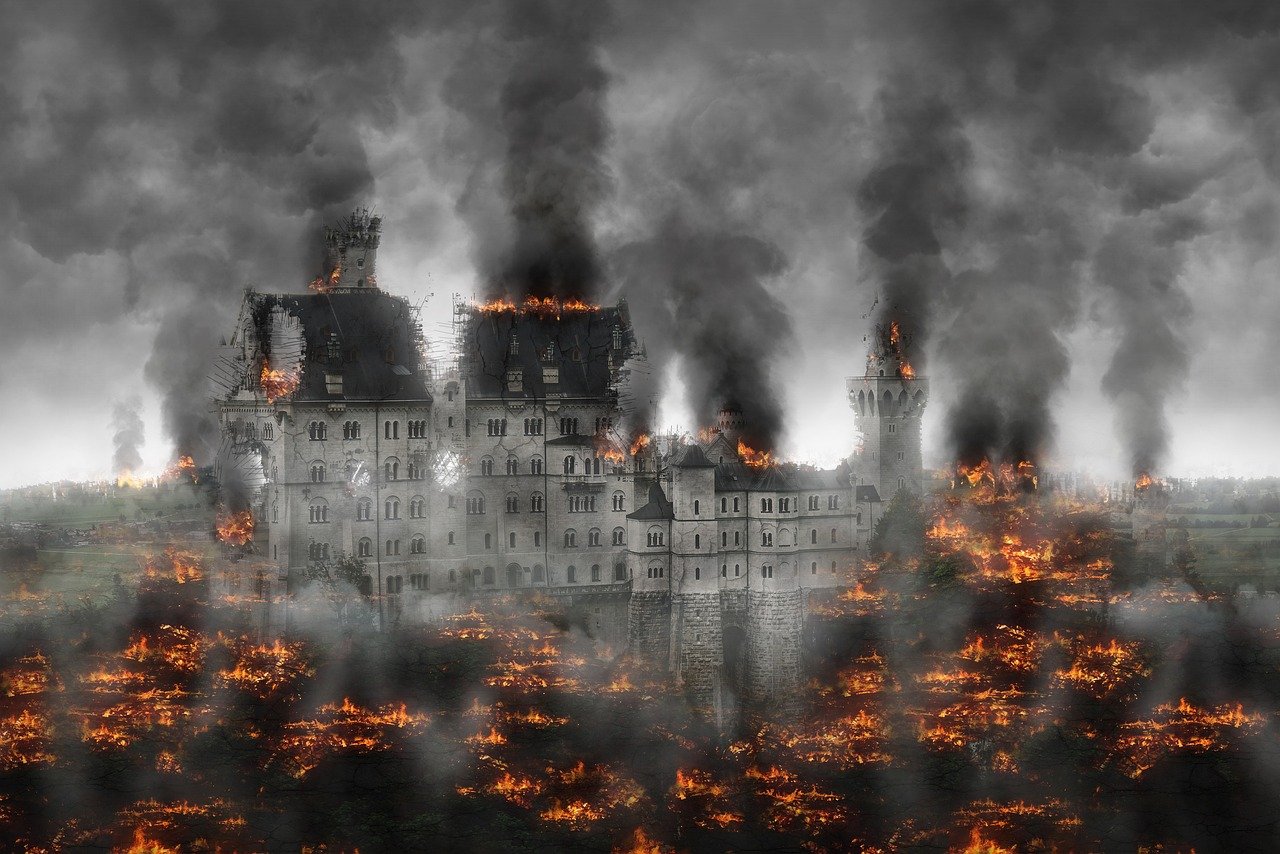Explore all civilizations in history with our comprehensive timeline. Uncover the rich tapestry of humanity’s past on our blog.
Delving into All Civilizations in History Timeline: Ancient Civilizations In-Depth Analysis
Key Highlights
- This blog post explores the chronological rise and evolution of significant civilizations across the globe, from the dawn of human history to the present day.
- We’ll journey through ancient Mesopotamia, the cradle of civilization, to the majestic empires of Egypt, the Indus Valley, China, and beyond.
- Uncover the cultural legacies, technological advancements, and societal structures that defined these remarkable civilizations.
- Analyze the impact of globalization, technological revolutions, and major historical events on shaping the trajectory of human civilization.
- Lastly, we’ll examine the importance of preserving our global heritage for future generations and ponder the future of human civilization.
Introduction
Human history is a complex story made up of many civilizations that have lived on Earth. Starting from ancient Mesopotamia, known as the cradle of civilization, these societies have grown and declined over time, influencing human progress. This blog post takes you on an exciting journey through time. It looks at the timeline and development of some of the most important ancient civilizations.
The Dawn of Civilization
The change from nomadic hunter-gatherers to settled farming communities was an important moment in human history. This time is known as the Neolithic Revolution. During this period, early civilizations began to form.
As people learned farming, they built permanent homes, grew crops, and tamed animals. These changes caused populations to grow, created extra food, and allowed people to focus on different jobs. This led to more complex social structures and new ideas in many areas. With the growth of cities and the invention of writing, civilizations started to thrive.
Understanding the Concept of Civilization
Defining a civilization can be tricky since different experts have different ideas. In general, a civilization is a complex society that has special features that set it apart from earlier groups.
One major sign of a civilization is having cities. These urban centers are important for trade, government, and cultural sharing. Another key part is having a writing system. This helps with keeping records, communicating, and sharing knowledge through time.
Civilizations also show job specialization, a social class system, a central government, big buildings, and progress in technology and art. The oldest civilization is often thought to be ancient Sumer in Mesopotamia. However, many other societies around the world also developed these features independently, each adding something special to human history.
Characteristics of Early Civilizations
Early civilizations had many things in common, even though they were very different in where they were located and their cultures. A main feature was the creation of organized social structures. These structures often included a hierarchy. Rulers, priests, and nobles were at the top, while farmers, artisans, and laborers were at the bottom.
To keep order, centralized governments were formed. These governments enforced laws and managed resources. Rulers such as kings, emperors, or priests had power and authority, often backed by a group of officials. How people lived in these early civilizations depended a lot on their social class and job.
Farmers were important because they provided food. Artisans focused on making products, like pottery, weaving, and metalwork. Trade and commerce grew, linking different communities and allowing the exchange of goods and ideas. Religion and spirituality were also very important in daily life, with temples and rituals being central to ancient societies.
Ancient River Valley Civilizations
The earliest civilizations in the world grew near rich river valleys. These areas had plenty of water and good soil, which helped them grow more food. The ancient river valley civilizations, like those in Mesopotamia, Egypt, the Indus Valley, and China, all developed on their own. They created their own cultures, governments, and technologies that changed human history.
For example, Mesopotamia gave us writing, while Egypt built impressive pyramids. These civilizations left us amazing legacies. Their new ideas in farming, math, astronomy, and government helped later civilizations progress.
Mesopotamia: Cradle of Civilization
The Sumerian civilization began between the Tigris and Euphrates rivers in the fertile crescent of Mesopotamia. This place is often called the cradle of civilization. The Sumerians built some of the first cities in the world, like Uruk, Ur, and Lagash. They created a writing system using cuneiform on clay tablets. This allowed them to keep records, write literature, and share knowledge.
They also made great advances in mathematics, astronomy, and law. The Sumerians had a unique math system based on the number 60. This system is still used in how we keep time and in geometry today. They studied the stars, which helped start the field of astronomy.
Additionally, the Sumerians wrote legal codes, like the Code of Hammurabi, which is one of the first known examples of written law. Although they faced problems like climate changes and internal disputes, the impact of Sumerian civilization lasted well beyond their time, influencing many cultures in the ancient world.
Egypt: Mysteries Along the Nile
Along the fertile banks of the Nile River in North Africa, the ancient Egyptian civilization thrived for over three thousand years. Known for their stunning monuments, hieroglyphic writing, and rich religious beliefs, the ancient Egyptians built a society that still fascinates people today.
The Great Pyramids of Giza are large tombs made for pharaohs. They show the strong building skills and planning of the ancient Egyptian civilization. These pyramids, along with the Sphinx, temples, and tombs, highlight their artistic talents and deep religious faith.
The ancient Egyptians also made important advances in math, astronomy, and medicine. They created a calendar based on the solar year, observed the stars carefully, and used advanced medical methods, including surgery and setting bones.

The Indus Valley Civilization and its Mysteries
In the rich lands of the Indus Valley, which includes parts of today’s India and Pakistan, the Indus Valley Civilization began around 2600 BCE. This civilization had well-planned cities like Harappa and Mohenjo-Daro. These cities featured smartly arranged streets, advanced drainage systems, and large public baths.
The people of the Indus Valley were great craftsmen. They made pottery, seals, and jewelry, showing their strong artistic skills. Their writing system is still not understood, but findings show they had a well-organized society. They used standard weights and measures, which points to a complex trade and governance system.
Even though they did not build grand palaces or temples like other early civilizations, the Indus Valley Civilization was very advanced. It mysteriously declined around 1900 BCE, which fascinates scholars. Many believe the decline may have been due to environmental changes, climate change, or shifting river paths.
Ancient China: Foundations of the Middle Kingdom
The story of Chinese civilization began along the Yellow River in East Asia. The first dynasties, like the Xia and the Shang, grew powerful as they ruled bigger lands. The Shang Dynasty is special because it is famous for bronze casting, rich rituals, and the use of oracle bone script. This dynasty marked an important time in early Chinese history.
Ancient Chinese civilization grew on its own. It created unique culture, ideas, and technology. One important idea was the Mandate of Heaven. This idea explained why emperors had the right to rule and became key in Chinese politics.
From the start, the Chinese were very good at farming, making silk, and pottery. They also created a writing system that used characters, or logograms, to show words. This is what forms the basis of the Chinese writing system still used today.
Read More- Geometry Behind Pyramids of Egypt
Classical Civilizations of the Ancient World
After the time of the old river valley civilizations, new empires and societies showed up. They changed the ancient world a lot. Greece brought great ideas and art. Rome contributed strong military power and impressive buildings. These classical civilizations pushed the limits of what people could achieve.
They created complex systems for government, philosophy, literature, art, and war. Their influence helped change Western civilization and other areas too. The sharing of ideas, trade, and conflicts between these societies shaped the political, social, and cultural parts of the ancient world.
Greece: Birthplace of Western Culture
In the sunny islands and mainlands of Greece, the ancient Greek civilization thrived. It was surrounded by the blue waters of the Aegean Sea. The Greeks learned about sailing, trading, and art from earlier cultures like the Minoans and Mycenaeans. They created a system of independent city-states, each having its own government, laws, and customs.
Ancient Greek civilization made important contributions to philosophy, literature, art, and democracy. Thinkers like Socrates, Plato, and Aristotle shaped early Western philosophy. Playwrights like Sophocles and Euripides wrote plays that are still celebrated today.
The Greeks valued knowledge, reason, and art. This greatly affected Western culture. Their sculptures and buildings showcased balance and beauty and still amaze us today. Also, their democratic ideas were limited in ancient Greece but helped form the basis for today’s democracy.
Rome: From Republic to Empire
From small beginnings as a city-state in central Italy, ancient Rome grew into one of the most powerful empires ever. First, it was a republic, but over time, Rome expanded its control. It conquered nearby lands and built a huge empire that went from the British Isles to North Africa and the Middle East.
The Romans were great at military strategy, engineering, and law. They had a strong army and smart methods for siege warfare. This allowed them to take over large areas. Their skills in engineering showed in their roads, aqueducts, and public buildings like the Colosseum and the Pantheon. Many of these structures still stand today.
Roman law, written in the Twelve Tables, still influences legal systems around the world. The Romans valued order, practicality, and good administration. This helped their empire grow and left a lasting impact on Western Civilization.
The Persian Empire: A Forgotten Powerhouse
The Persian Empire often gets less recognition than the Greek and Roman empires. It was a powerful force in the ancient world. This empire covered large areas in western Asia. It stretched from Egypt in the west to the Indus Valley in the east. The Persian Empire was important in shaping the politics, economy, and culture of its time.
Cyrus the Great founded the Persian Empire in the 6th century BCE. This empire was known for good management, acceptance of different religions, and great infrastructure. The Persians built a strong network of roads, one of which was the Royal Road. This network helped with communication and trade across the large empire.
They also created a uniform system of weights and measures, set up a postal service, and used a single currency. This all helped bring stability and success to the economy. The legacy of the Persian Empire is seen in its role as a cultural bridge between the East and West. It connected various groups of people and helped share ideas and goods.
The Mayan Civilization: Advanced and Mysterious
In the hot jungles of Central America, the Mayan civilization thrived for more than two thousand years. They are well-known for their unique writing system, detailed calendar, and amazing monumental architecture. The Maya were also skilled astronomers, mathematicians, and artists.
Their cities had tall pyramids, temples, and palaces. These city-states were important places for rituals, trade, and learning. The Maya had a strong grasp of astronomy. This helped them develop advanced calendars, like the Long Count, which tracked time over many years.
The sudden decline of the Maya in the 9th century CE is still debated by historians. Many factors might have played a part. These include overpopulation, deforestation, climate change, and constant fighting. This decline left behind an interesting and mysterious legacy.
Best Reviewed Book Amazon- History: From the Dawn of Civilization to the Present Day
The Spread of Civilizations Across Continents
As civilizations grew, their influence spread further through trade, conquest, and sharing culture. New civilizations appeared across continents. They took ideas from earlier societies and changed them to fit their own areas.
In Africa, kingdoms and empires like Axum, Ghana, Mali, and Songhai built large trade networks. They spread wealth and helped share goods and ideas across the Sahara Desert and along the coast. In South America, the Inca, Aztec, and Maya created advanced societies with monumental architecture and distinct social and religious traditions.
African Kingdoms and Empires
Beyond the rich banks of the Nile, many different and advanced civilizations appeared across Africa. This spread from busy trade centers in West Africa to strong kingdoms in East and Southern Africa. These societies built complex social classes, vibrant art, and strong trade links that reached parts of the world.
In West Africa, the kingdoms of Ghana, Mali, and Songhai controlled important trade routes through the Sahara Desert. These kingdoms grew by trading gold, salt, ivory, and slaves with North Africa and West Asia. The wealth they gained helped them become strong and influential.
African societies also created detailed systems of government, social classes, and religious ideas. Many people accepted Islam from trade and cultural exchanges, while others kept their original beliefs. Their art and buildings, shown in sculptures, masks, and unique construction styles, displayed the broad range and creativity of African cultures.
The Central and South American Empires
Across the Atlantic Ocean, in the Americas, many ancient cultures thrived. In Central and South America, the Inca, Aztec, and Maya built complex societies known for their impressive architecture, smart farming methods, and unique art.
The Inca lived in the Andes Mountains of South America. They created a large empire that stretched from modern-day Colombia to Chile. They built a strong network of roads, bridges, and terraced fields. This showed their amazing skills in engineering and managing resources.
In Mesoamerica, the Aztec civilization grew strong with Tenochtitlan as their main city. The Aztecs were famous for their military strength, detailed calendar, and rich religious ceremonies. They ruled a vast empire with support from trade and tribute.
Expansion and Influence of Asian Civilizations
From the rich lands of the Yellow River, ancient Chinese civilization grew. It spread its impact on culture, politics, and technology across East and Southeast Asia. The Xia Dynasty was the first known dynasty in China. It started centralized rule and unique cultural practices.
Later dynasties, like the Shang and Zhou, strengthened Chinese power. They improved bronze casting, created a complex writing system, and set up detailed social layers. Confucianism and Taoism, which are two important philosophies in China, came about during this time. They greatly influenced Chinese beliefs and values.
The Silk Road was a network of old trade routes from China to the Middle East. It helped mix goods, ideas, and technologies between the East and West. Chinese silk, porcelain, and spices were in high demand. Also, Buddhism and other cultural ideas traveled into China through these routes.
Best Reviewed Book- History Pockets: Ancient Civilization
The Medieval World and Beyond
The fall of the Western Roman Empire in the 5th century CE changed Europe from the ancient world to the medieval period. During this time, new empires grew, major religions spread, and knowledge expanded.
In the East, the Byzantine Empire kept Roman customs alive. The Islamic Golden Age also supported growth in math, science, and the arts. At the same time, in Asia, new dynasties in China began to gain power. Trade routes linked different areas too.
Byzantium: The Eastern Roman Empire
As the Western Roman Empire fell apart, the Eastern Roman Empire continued to thrive in Constantinople, which we now call Istanbul. This part of history became known as the Byzantine Empire and lasted for another thousand years. It kept many aspects of ancient Greek civilization while blending in Christian beliefs.
Constantinople was located at an important trade point between Europe and Asia. This made it a lively hub for business, diplomacy, and cultural mix. The Byzantines advanced architecture, and the Hagia Sophia is a great example of their style. They also kept ancient Greek and Roman texts safe, helping share classic knowledge with the West.
The Byzantine Empire was important in the growth of Christianity. It impacted Eastern Orthodox Christianity and helped protect Europe from the spread of Islam.
The Islamic Golden Age
From the 8th to the 13th centuries CE, the Islamic world had a great time known as the Islamic Golden Age. This was a time of strong growth in ideas, science, and art. After the death of the Prophet Muhammad in 632 CE, the Islamic empire grew quickly. It spread from the Iberian Peninsula in the West to the Indus Valley in the East.
This large empire helped people share knowledge. Scholars from many different backgrounds helped make big advances in math, astronomy, medicine, philosophy, and the arts. Some of the main achievements during this time were the development of algebra, the use of Arabic numerals, and the creation of observatories for observing the stars.
The Rise of European Powers
In the late Middle Ages and during the Renaissance, Europe changed a lot. There was a new interest in learning from the past, exploring new lands, and powerful countries started to grow. This time helped European countries to reach out into the world.
The Renaissance started in Italy in the 14th century. It brought back art, writing, and science. People looked back at old traditions from ancient Greek and Roman times for inspiration. In the 15th century, the printing press was invented, which changed how knowledge was shared.
At the same time, new sea routes were found that led to Asia and the Americas. This started the Age of Exploration and made European countries want to colonize new places. As they set up colonies and trade networks, it greatly changed the global balance of power.
Civilizations of the Indian Subcontinent
While empires came and went in other parts of the world, the Indian subcontinent stayed active with new ideas, battles, and sharing of cultures. From the Mauryan Empire in the 3rd century BCE to the Mughal Empire in the 16th century CE, this region had strong empires, rich religious and philosophical beliefs, and amazing art.
The Mauryan Empire, started by Chandragupta Maurya, brought many areas together in the Indian subcontinent. This created a time of peace and helped Buddhism to spread. The Gupta Empire, known as the Golden Age of India, also saw great progress in art, literature, science, and math.
In the medieval period, Islam’s arrival added new cultural flavors. The Mughal Empire, founded by Babur in the 16th century, mixed Islamic and Hindu customs. It also left behind beautiful structures like the Taj Mahal and Red Fort.
The Age of Exploration and its Impact on Civilizations
The 15th century started a new time in how people around the world interacted. This period is known as the Age of Exploration. European explorers wanted to learn more, find wealth, and create new trade routes to the East. They took bold trips that changed history forever.
When Christopher Columbus found the Americas in 1492 and Vasco da Gama found the sea route to India in 1498, it had big effects for people everywhere. This led to a large exchange of goods, ideas, and even diseases like never before.
Contact and Conquest: Europeans in the New World
The meeting between Europeans and the native people of the Americas in the late 1400s and 1500s was a big clash of cultures. This led to many serious changes. Europeans wanted gold, land, and to spread Christianity. The main powers that drove this were Spain and Portugal. They started to conquer and colonize the land.
Spanish explorers, known as conquistadors, had better weapons and brought diseases that harmed the native people. They took down the powerful Aztec Empire in Mexico and the Inca Empire in South America. This allowed them to take large areas of land and a lot of wealth.
Europeans changed the Americas a lot. They brought new crops and animals. Sadly, many native people died from diseases and fighting. They also forced their languages, religions, and social structures onto the land and its people.
Trade Routes: Silk, Spice, and Beyond
For many years before the Age of Exploration, trade routes spanned continents. They connected faraway civilizations and helped share goods, ideas, and cultures. Some of the most noted ones were the Silk Road, linking China to the Middle East and Europe, and the maritime spice routes connecting Asia to Africa and Europe.
These trade routes moved not just luxury items like silk, spices, and porcelain but also helped spread religions, technologies, and arts. Merchants and travelers acted as cultural links. They carried new knowledge and ideas that changed many societies along these trade paths.
Along these routes, there were caravanserai. These were busy roadside inns that offered places for merchants to rest, trade goods, and tell stories. The connections made along these trade routes led to a blend of cultures.
The Collision of Cultures and Civilizations
The Age of Exploration started a time of more global interaction. However, it also led to clashes between different cultures and societies. European countries greatly affected local populations around the world. They forced their languages, religions, and social systems on the places they conquered.
Some sharing of cultures did happen, but it was mostly about people being made to fit into European traditions. This often led to the erasing of local customs and beliefs. The transatlantic slave trade, which cruelly took millions of Africans to the Americas, is a dark part of this history.
The effects of colonialism are still seen today. We face questions about keeping cultures alive, identity, and the rights of native people. Climate change, a major global issue, needs countries to work together. By looking at the successes and failures of past societies, especially in how they managed resources and adapted, we can learn and find useful lessons.
The Industrial Revolution and Modern Societies
The Industrial Revolution started in Britain in the late 18th century. It changed human history in a big way and affected societies and economies everywhere. New machines were invented, especially in the textile industry. This resulted in more production, more factories, and bigger cities.
During this time, there were many new technologies. These included the steam engine, cotton gin, and power loom. They changed how we made things, traveled, and communicated. The Industrial Revolution brought many changes to society and the economy. It led to the growth of capitalism, a rising middle class, and new social problems. These problems included pollution, poverty, and the issues related to urban living.
Transformation of Societies and Economies
The Industrial Revolution had a big impact. It changed economies, societies, political systems, and daily life. Mass production made goods cheaper. This changed how people consumed and started a new culture of consumers.
Many people moved from rural areas to big cities to work in factories. This caused cities to grow quickly. However, this also led to problems like overcrowding, poverty, and poor sanitation. Factory jobs provided new chances, but the work was often tough.
Even with its problems, the Industrial Revolution helped create the modern world. It brought new technologies that led to more innovations in manufacturing, communication, and transportation.
The Age of Empires and Colonies
The 19th century was a time of great change. This change came from industrialization and the need for more resources and markets. European countries wanted to grow their empires by taking over land in Africa, Asia, and the Pacific.
During this time, there was fierce competition for colonies. This led to the Scramble for Africa, where European nations divided up Africa and made new borders that did not match the land or people living there. The result was the loss of resources and control of local populations, causing long-term problems for these areas.
In the 20th century, nationalism and movements against colonialism began to rise. These movements questioned European control. India gained independence in 1947, and many countries in Africa and Asia soon followed. This marked the end of European colonial empires and brought about a new world order.
Towards the Contemporary World
The 20th century had many significant events. There were global conflicts, quick advancements in technology, social movements, and people became more connected worldwide. Two world wars happened. They were caused by nationalism, competition for resources, and different political beliefs. These wars brought death and destruction like never seen before.
After World War II, the Cold War started. This was a time of tension between the United States and the Soviet Union. During the same period, the world also saw the rise of globalization and new technologies like the internet. People began to worry more about environmental problems like pollution and climate change.
Buy From Amazon- National Geographic World History Great Civilizations
Civilizations in the 20th Century and Beyond
The 20th century saw a fast growth in technology, global trade, and new challenges around the world. The two World Wars changed the political map. They caused European empires to lose power and allowed the United States and the Soviet Union to become dominant forces.
In the second half of the century, we experienced the Cold War. This was a time of differences in ideas and strong competition in technology. The Berlin Wall fell in 1989, and the Soviet Union ended in 1991. These events marked the end of the Cold War and brought about a new world order.
World Wars and the Reconfiguration of Nations
The 20th century faced two major wars, World War I (1914-1918) and World War II (1939-1945). These wars changed the world and left lasting pain. World War I started due to the assassination of Archduke Franz Ferdinand from Austria-Hungary. This event pulled many European countries into a network of alliances and rivalries.
New weapons, like machine guns and poison gas, caused high casualties. World War II followed, fueled by the desires of Nazi Germany, Japan, and Italy to expand. It caused even more destruction. The Holocaust and the atomic bombings of Hiroshima and Nagasaki had a significant impact on human history.
These wars resulted in the downfall of empires and the change of country borders. They also led to new powerful nations. After World War I, the League of Nations was created, but it did not stop future wars. The United Nations was established in 1945 to encourage countries to work together.
Decolonization and the Emergence of New Nations
The middle of the 20th century saw many countries in Africa, Asia, and the Caribbean gaining independence from European powers. This change brought about new nations and changed the way nations interacted globally. The shift came because European countries were weaker after World War II, there were strong nationalist movements, and many people opposed colonialism.
The new countries had many issues to tackle. They needed to set up stable governments. They also needed to grow their economies and deal with social inequalities that were made worse by colonial rule. The journey to full independence was often complicated. It included times of peace, times of conflict, and ongoing problems from the past.
The Digital Revolution and Globalization
The late 20th century and early 21st century saw huge advancements in technology. Computers and communication tools changed everything. This is known as the digital revolution. New devices like personal computers, the internet, and mobile phones have changed how we live, work, and connect with each other.
This digital revolution has also helped globalization. It has linked people together through trade, communication, and sharing of ideas and cultures. The internet makes it easier for communities around the world to connect. It has opened up opportunities for working together and sharing cultural experiences.
Still, there are challenges. The rise of the digital age has led to worries about privacy and cybersecurity. We also face issues with misinformation. Plus, there is a growing divide between those who enjoy the benefits of new technology and those who do not.
Best Reviewed Book Amazon- Sapiens: A Brief History of Humankind
Preserving Our Global Heritage
As we look toward the future, it is very important to remember and learn from the cultures of past societies. Ancient cities, temples, and tombs are not just old structures; they offer important hints about human history.
Taking care of this global heritage is key for the generations to come. Groups like UNESCO help to find and protect World Heritage Sites. When we study ancient cultures, we learn about the complexities of human societies. We can see their new ideas, their challenges, and what helped them grow or failed them.
UNESCO World Heritage Sites and Civilization
UNESCO World Heritage Sites represent outstanding examples of human creativity, cultural significance, and natural beauty. These sites, recognized for their exceptional universal value, stand as testaments to the achievements of past civilizations and their enduring legacies.
From the pyramids of Giza to the Great Wall of China, UNESCO World Heritage Sites span continents and historical periods, providing a glimpse into the diversity and richness of human civilization. The preservation of these sites is essential for future generations, ensuring that the stories of our shared past are not lost to time.
| Site | Location | Significance |
| Great Pyramid of Giza | Egypt | The oldest and largest of the three pyramids at Giza, a testament to the ancient Egyptian civilization’s ingenuity and architectural prowess. |
| Great Wall of China | China | A series of fortifications that were built over centuries, showcasing an incredible feat of engineering and a symbol of Chinese civilization’s strength and resilience. |
| Machu Picchu | Peru | An ancient Incan city nestled high in the Andes Mountains, representing an extraordinary example of Incan architecture and ingenuity. |
| Angkor Wat | Cambodia | A vast temple complex built during the Khmer Empire, demonstrating the architectural and artistic achievements of Southeast Asian civilizations. |
The Role of Archaeology in Unearthing Civilizations
Archaeology is the study of old cultures by digging up and looking at their materials. It is very important to find out the stories of cultures that no longer exist. Archaeologists carefully dig in ancient cities, burial sites, and settlements. They uncover artifacts and structures that help us learn about the lives and beliefs of people from long ago.
Through careful digging and study, archaeologists have found remains of the Sumerian civilization in Mesopotamia. These digs have shown us how Sumerian cities were laid out, their detailed religious practices, and many clay tablets with cuneiform writing. This writing gives us a look into their language, literature, and everyday life.
Archaeology allows us to rebuild the past. It helps us put together the stories of ancient cultures and understand human history better over time. The findings from archaeology continue to change how we view the past.
Cultural Preservation and the Challenges Ahead
As we face the challenges of the 21st century, we have to deal with issues like globalization, climate change, and political unrest. Our shared cultural heritage is now facing new problems. Old sites and artifacts are more at risk. They are threatened by things like stealing, damage from conflicts, and the effects of tourism.
Also, the parts of culture that you can’t touch, like languages, traditions, and beliefs, are in danger of fading away. This happens as communities feel the pressure to fit in and global forces reduce cultural diversity. To tackle these challenges, we need to work together with countries from around the world.
Amazon Book – Migrations: A History of Where We All Come From
Looking Towards the Future
At this point in human history, we have a special chance to think about what we can learn from past civilizations. We can imagine a future that learns from their mistakes and builds on their successes.
As we face global challenges like climate change, social inequality, and new technology, it is important to understand how past societies worked and what helped them succeed or caused them to fall. By working together as a world, encouraging sustainability, and welcoming new ideas, we can create a future where human civilization can grow and do well.
The Impact of Technology on Society
Technology has been very important in shaping human history. It goes back to when the wheel was invented and continues with the rise of the internet. Now, as we approach more advances in technology, it is very important to understand how it affects our lives.
The digital revolution has changed how we communicate and find information. With the internet and mobile devices, our social interactions have shifted too. While this brings many good opportunities, it also brings challenges. We need to deal with issues like privacy, false information, and making sure everyone benefits from technology.
New technologies like artificial intelligence and renewable energy can help solve big problems we face. However, they also bring up ethical questions and the need for careful rules. It is very important to handle these new technologies wisely.
Global Challenges and Civilizational Responses
Throughout human history, there have been times when civilizations faced big challenges. These challenges shaped how they responded and changed their futures. For example, climate change could alter landscapes, and social structures often had to adapt to new needs. Civilizations like the Ancient Greeks and Romans showed great strength in tough times. The Indus Valley Civilization found smart ways to fix water supply issues. The Egyptian civilization also did well by managing large building projects. Over the years, empires like the Inca Empire and Chinese dynasties faced many struggles. They used innovation and adaptation to overcome these trials. This way, they created lasting answers to global challenges.
Envisioning the Future of Human Civilization
As technology moves forward quickly, the future of human society looks bright due to artificial intelligence and machine learning. The use of NLP algorithms and predictive analysis can change our society a lot. Imagine a world where we no longer have language barriers because of real-time translation. This would improve global communication like never before. Plus, using NLP in healthcare could change how doctors diagnose and treat patients. It could give more personal and effective care to people around the world. There are so many possibilities as we look ahead to a future where NLP is important in shaping how people develop.
Conclusion
As we look at human history, we see that all civilizations are connected to time. The challenges people faced and how they responded shaped our lives today. To think about the future of human civilization, we must learn from the past. From the great pyramids of ancient Egypt to the busy streets of today’s cities, each civilization gives us lessons to understand society, culture, and progress. Our story throughout time shows the strength and new ideas that define human civilization.
Frequently Asked Questions
What defines a civilization?
A civilization is defined by its unique cultural, social, political, and economic traits. These traits set it apart from other groups of people. Important parts of a civilization are a plan for government, a clear social structure, advanced technology, and common values. By looking at these parts, we can recognize and learn about different civilizations from the past.
How do civilizations impact the modern world?
Civilizations play a vital role in shaping the modern world. They do this through their culture, technology, and social rules. By learning about their history, we can better understand the way things are today and what may happen in the future.
Can civilizations disappear, and how?
Civilizations can disappear for many reasons. These include natural disasters, wars, pollution, or problems in society. It is important to learn from these past events. This knowledge can help us create a better future for human civilization.
What role does technology play in the evolution of civilizations?
Technology is very important for building societies. It helps improve communication, essential structures, and new ideas. Since the agricultural revolution up to the digital age, technology has helped us grow, change how society works, and boost the economy. It shapes the path of civilizations over time.
How can we contribute to preserving ancient civilizations?
Supporting archaeological research is important. It helps promote cultural awareness and advocates for conserving heritage. Individuals can truly help protect ancient civilizations for future generations. It is key to understand and respect different cultural heritages. These steps are essential for preservation.









